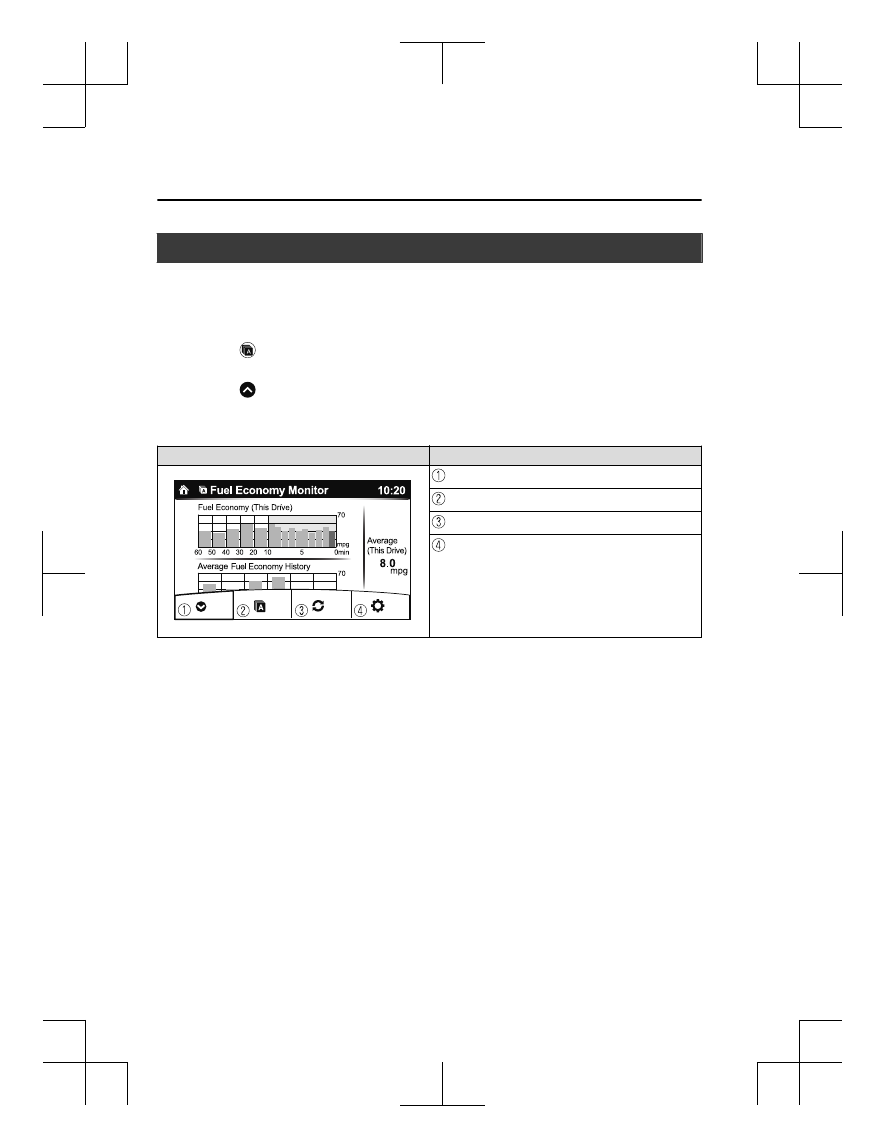Mazda MX-5 (2018 year). Manual - part 12

Fuel Economy Monitor
*
For vehicles with type B audio, the Fuel Consumption information is displayed by operating
each icon in the display.
In addition, after completing a trip, the total energy efficiency to date is displayed in the
ending display when the ending display is turned on.
1. Select the icon on the home screen to display the applications screen.
2. Select the “Fuel Economy Monitor”.
3. Select the icon at the bottom left of the screen to display the menu in the lower part
of the screen.
4. Select the icon in the menu and perform the operation. Each icon operates as follows:
Indication on display
Control status
Hides the menu display.
Displays the application screen.
Resets the fuel economy data.
Displays the following setting screen.
Ending display on/off switching
(Without Multi-information Display)
On/off switching for function which synchronizes
(links) reset of fuel economy data with trip meter
(TRIP A)
When Driving
Fuel Economy Monitor
4-68
*Some models.
MX-5_8GF7-EA-17J_Edition2
2017-10-31 14:07:27